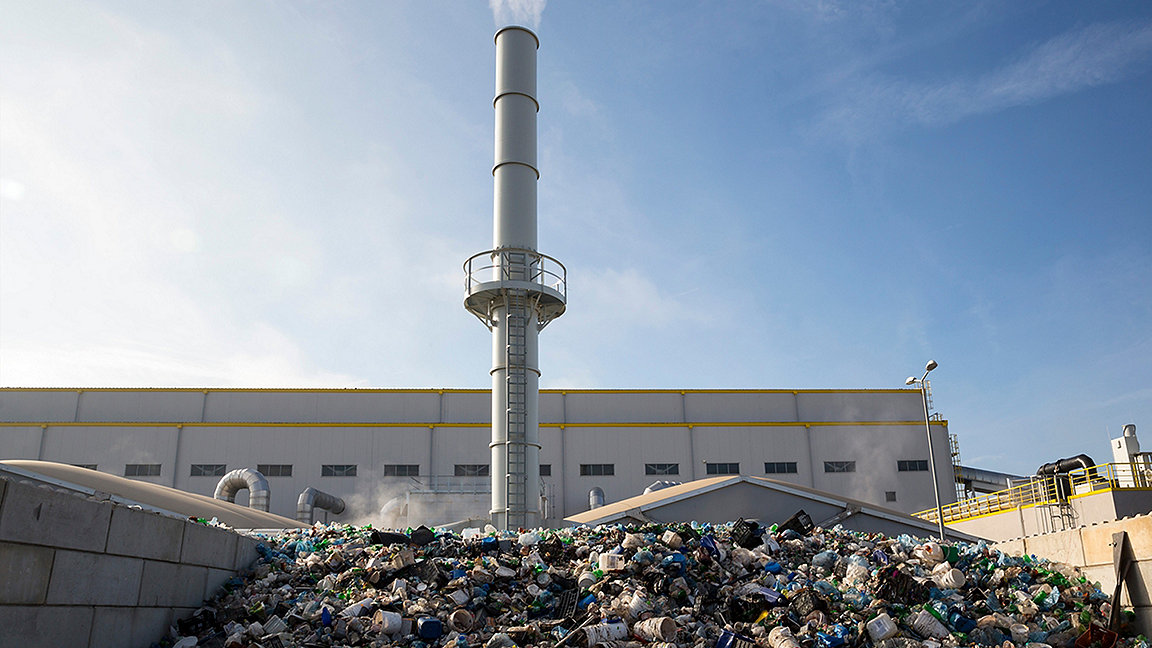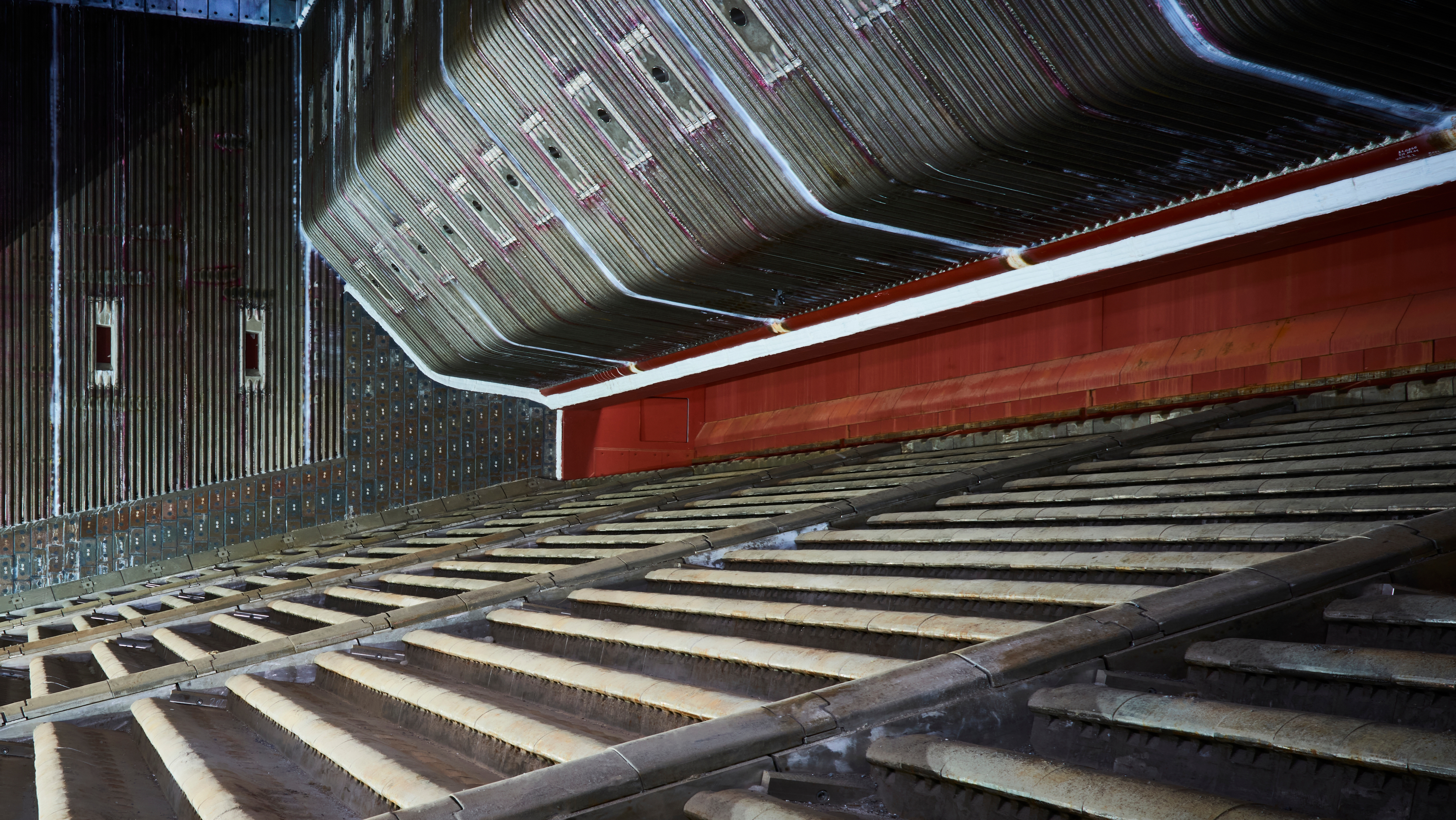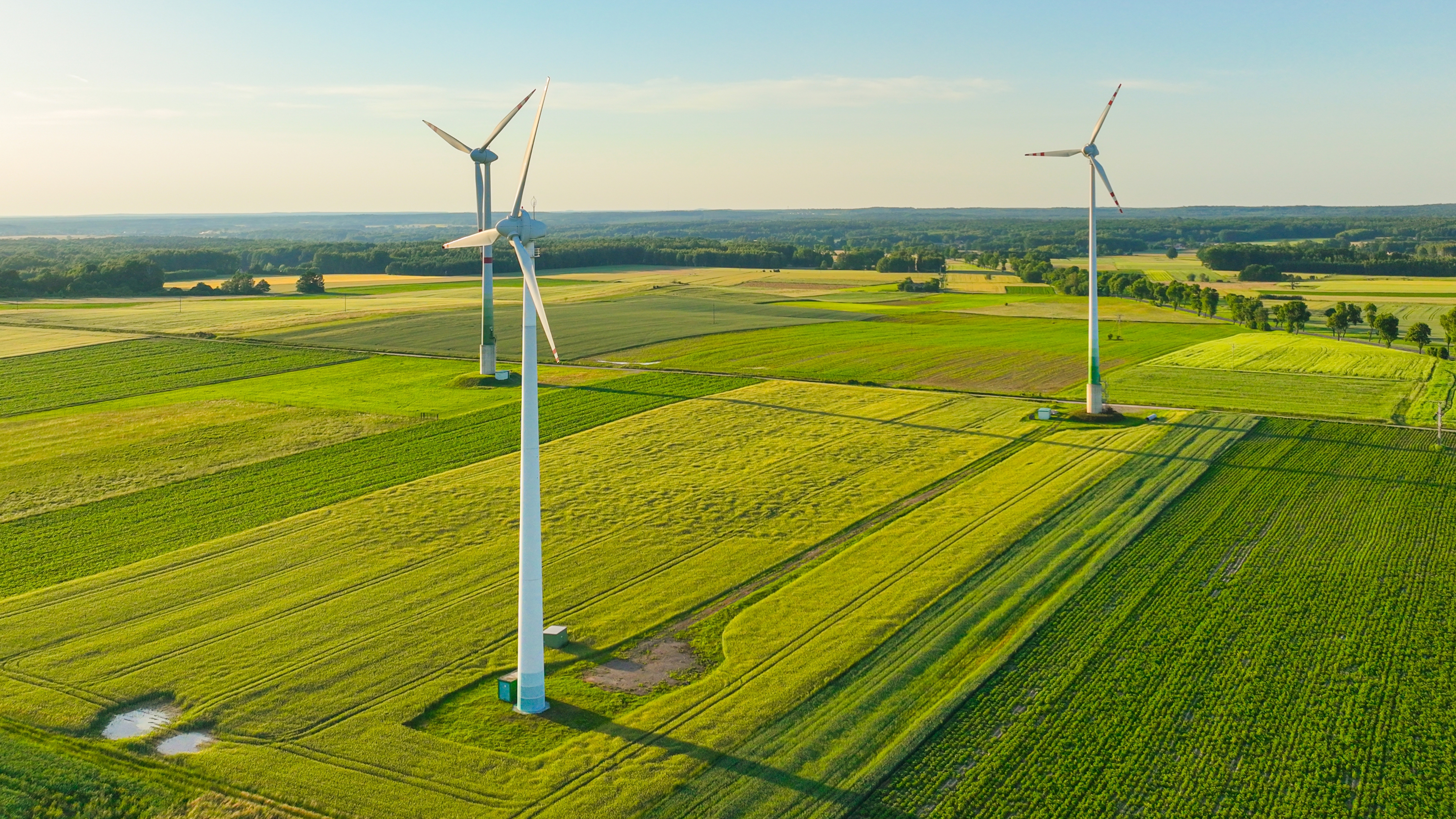
EfW refers to the range of technologies that generate useable forms of energy – such as electricity, steam and transport fuel – from non-recyclable waste that would otherwise go to landfill. It is typically used in densely populated countries with limited landmass – where landfill capacity is restricted and disposal charges expensive – such as Germany, the UK or Japan, or where the geology does not lend itself to landfill, such as in the Netherlands and Hawaii, USA.
The World Bank's 2018 publication What a Waste 2.0: A Global Snapshot of Solid Waste Management to 2050 predicted that worldwide generation of municipal solid waste will increase from 2.01bn tonnes in 2016 to an estimated 3.4bn tonnes in 2050 if business as usual is maintained. It also reported that, globally, 37% of waste is disposed of in some kind of landfill, 33% is mismanaged and openly dumped, 19% is processed for recycling and composting and 11% is treated by incineration.
EfW is a method of managing waste that cannot be cost-effectively recycled, reused or repurposed. This may be necessary because insufficient recycling infrastructure is in place, waste is contaminated or the waste contains composite materials that would cause greater harm to public health or to the environment than modern energy recovery methods.
Methods of EfW
EfW traditionally involves the combustion method but other technologies are available such as pyrolysis, gasification, plasma gasification and anaerobic digestion. The ancillary and end products – which may be recycled, reused or provide other commercial benefits – differ according to the method of EfW utilised.
Due to its simplicity and operational record, the combustion method most commonly utilises the moving grate system to transport waste through the incineration process. This method broadly involves the following steps:
- Waste is delivered to the plant by road (although some plants have rail links) where it is unloaded into a waste bunker for storage and mixing by a waste crane.
- The waste crane transfers waste from the waste bunker to a ram feeder via a hopper and chute. The ram feeder pushes waste onto the moving grate which is located beneath the boiler. The waste is stoked and conveyed through the combustion chamber on the moving grate with the resulting heat passing through the boiler.
- The water inside the boiler is superheated and converted to high pressure steam which is then passed through a turbine causing the blades to rotate. This turbine is connected to a generator which produces electricity for export to the grid. After passing through the turbine, the steam generated may be used to supply district heating systems or local processing plants and factories. The steam is cooled via a condenser and the plant's cooling system for re-use. To accommodate fluctuations in power demand from the grid, plants are often capable of operating in 'island mode' which allows for waste to be processed without export of electricity.
- The resulting ash generated by the combustion process is either discharged and handled directly from the moving grate (termed 'bottom ash') or collected downstream from the boiler (termed 'fly ash'). The ash is stockpiled in a bunker prior to removal from the plant.
- The gases produced by incineration are filtered and treated using sophisticated air pollution control systems before release to the atmosphere via the plant's stack. Despite the filtration, though, the process still produces carbon dioxide but, importantly, no fossil fuels are burned other than the fossil fraction of the waste itself. The plant must comply with strict emission standards which are monitored continuously during operation.
In lieu of the moving grate system, the combustion method can also use fluidised bed or rotary kiln systems. The fluidised bed system involves the incineration of waste in a large granular bed – using a material such as sand – through which superheated air is blown to create a bubbling effect. This allows for the uniform application of heat to the waste and achieves higher efficiencies. The rotary kiln system meanwhile incinerates waste inside a revolving chamber.
Pyrolysis involves the decomposition of organic material by applying indirect heat – typically between 400ºC and 800ºC – inside a chamber with no oxygen present. Gasification is similar, except that a limited amount of oxygen is present and a higher temperature, typically between 600ºC and 1,400ºC, is applied. Pyrolysis produces both combustible gas and liquid that can be used as a fuel, whereas gasification only produces combustible gas.
Plasma gasification is a relatively new technology that involves incinerating waste inside a plasma arc at extremely high temperatures – up to 10,000ºC or more. The result is a pure synthetic gas, with very limited ancillary products remaining.
Finally, anaerobic digestion involves the use of naturally occurring microorganisms to break down biodegradable organic materials such as food waste, manure and crop residue inside a digester with no oxygen present. The process is typically performed between 35ºC and 40ºC (termed mesophilic conditions) or between 50ºC and 55ºC (termed thermophilic conditions). It produces a gaseous mixture that mainly comprises methane and carbon dioxide, known as biogas, which is captured and used as a fuel. The remaining digestate can be used as fertiliser in either solid or liquid form.
The choice of technology will affect the extent to which waste needs to be treated before processing and indeed how much waste is required. The combustion method utilising a moving grate can accept municipal solid waste once it has undergone front end pre-treatment to extract recyclable materials. Anaerobic digestion requires the separation of organic materials prior to use which may also be shredded for homogenisation prior to being fed into the digester for increased efficiency. The type and quality of waste required for pyrolysis, gasification and plasma gasification is ultra-specific; this hinders the ability to utilise these methods on a commercial scale as waste streams are typically complex mixtures.

A photograph taken inside an EfW plant's combustion chamber showing the moving grate in the foreground with the ram feeder on the right (at the top of the moving grate) and boiler walls above.
Managing the continued need for EfW
The UK government's waste hierarchy policy prioritises the prevention, reuse and recycling of waste over EfW and landfill. There is a public perception that the continued use of EfW may be at the expense of preventing, reusing and recycling waste – a concern to which the EfW sector is rightly alive. The issue is that a large proportion of waste produced is not recyclable and EfW and landfill are the only feasible options for dealing with this at present. Given the public health, sanitary and environmental benefits of EfW in comparison to landfill, EfW is viewed as bankable technology by financing parties for infrastructure projects which is critical to the effective and safe management of waste for the time being.
The UK government's Net Zero Strategy states that the power sector, which includes EfW, contributed 11% to the UK's greenhouse gas emissions in 2019. It aims for all electricity to come from low carbon sources, moving to a fully decarbonised power system that meets increased demand by 2035.
The strategy expects that residual emissions from EfW will remain, but it considers that these can be reduced by implementing carbon capture, usage and storage (CCUS) technology. CCUS seeks to capture carbon dioxide before emission into the atmosphere, with the capture target typically set at 90% of the carbon dioxide contained in emissions.
The carbon dioxide could either be used or it may be stored underground. For example, carbon dioxide may be used in a methanation reactor with hydrogen resulting in synthetic methane which can be used as a transport fuel. Nonetheless, while there are limited uses, it is anticipated that the supply of stored carbon dioxide will greatly exceed any demand in the future.
CCUS is already planned for implementation on power projects, including EfW, in the UK, with projects under construction often requiring that provision is made to retrofit the technology at a later date. It is unclear at present if CCUS will become mandatory in the UK. The use of such technology will increase costs, technical complexity and space requirements which may render some projects unviable. There will also be an increase on a plant's parasitic load – the power consumed by the plant itself – where CCUS is adopted and so reduce its output capacity.
In June 2022, the European Parliament voted that waste incineration will fall under the EU Emissions Trading Scheme from 2026 onwards. If the UK Emissions Trading Scheme (UK ETS) is expanded to align with this, or if some form of carbon tax is implemented that affects EfW, CCUS will become more attractive to EfW plant owners as it will allow them to comply with their allocated cap on emissions – or to even sell surplus units – or reduce the amount of carbon tax paid.
Value relies on continued supply of waste
There are two main sources of revenue for EfW plants. Firstly, they can charge waste producers for disposal – gate fees. Secondly, they can sell the ancillary products (such as metals, fly ash from which salt can be extracted and bottom ash for use by the construction sector) and end products (electricity, steam and transport fuel). If no waste is available, both sources of revenue will be lost.
At present, EfW plants in the UK are attractive to waste disposal firms, local authorities and investors because gate fees are less than those for landfill due to the landfill tax. In 2021, the median gate fee excluding transport was £95/tonne for incineration, and £30/tonne for anaerobic digestion, compared to £124.70/tonne for non-hazardous landfill, which includes the landfill tax.
There is currently an adequate supply of residual waste in the UK that, for whatever reason, has not been reused or recycled. In contrast, there is already a shortage of waste in Norway and Sweden with both countries now importing it to supply some EfW plants.
There are competing views in the UK over the potential for overcapacity in the EfW sector in the future. This has already led to the introduction of a moratorium on the approval of EfW plants (where capacity exceeds 10MW) in Wales in 2021 with the Scottish government recently following suit banning any further planning grants for EfW projects due to indications raised in an independent report.
Prospects for EfW
The cost of an EfW plant is high both during the initial design and construction phase and during its operation. The World Bank's 2018 report estimated that the total capital cost, excluding operational expenditure, was between $600 and $1,000/tonne each year for an incinerator plant, and from $345 to $600/tonne each year for an anaerobic digestion plant in Europe.
Given the initial cost of an EfW plant and the risk of future change to the supply or quality of waste, it is important for prospective owners to consider their long-term financial viability. The majority of EfW plants will have an expected life of 25 years (and sometimes longer) and existing facilities can be retrofitted to extend this further. This is a long period over which the availability of waste needs to be considered.
Nonetheless, until waste is prevented entirely, or reusing and recycling waste prevails, there is and continues to be a pressing need for EfW to divert waste from landfill. With advances in technology, the environmental harm caused by EfW plants has reduced significantly since the introduction of flue gas treatment systems in the 1990s. While there is still further development required, developing CCUS technology means that in the future EfW could become carbon-negative – acting as a carbon sink.
For EfW to remain viable and to deter the use of landfill, it is important that the gate fee for EfW plants remains more attractive than landfill for waste disposal firms. If CCUS is mandated without a trusted method of offsetting the additional cost, or should costs of EfW otherwise increase – for example, if EfW is added to the UK ETS or a new carbon tax is introduced – this may render some EfW projects unviable absent additional government funding support.
An increase to EfW gate fees is not considered a viable solution to offset any significant cost addition due to CCUS, inclusion of EfW to UK ETS or the application of a carbon tax. Aside from the consequential requirement to increase landfill gate fees to ensure preference for EfW, there is concern that a significant rise could result in increased illegal or dangerous disposal methods. EfW represents an opportunity for a single point source where carbon dioxide can be captured and, by taking account of the biogenic part of waste, allow for negative carbon emissions.

